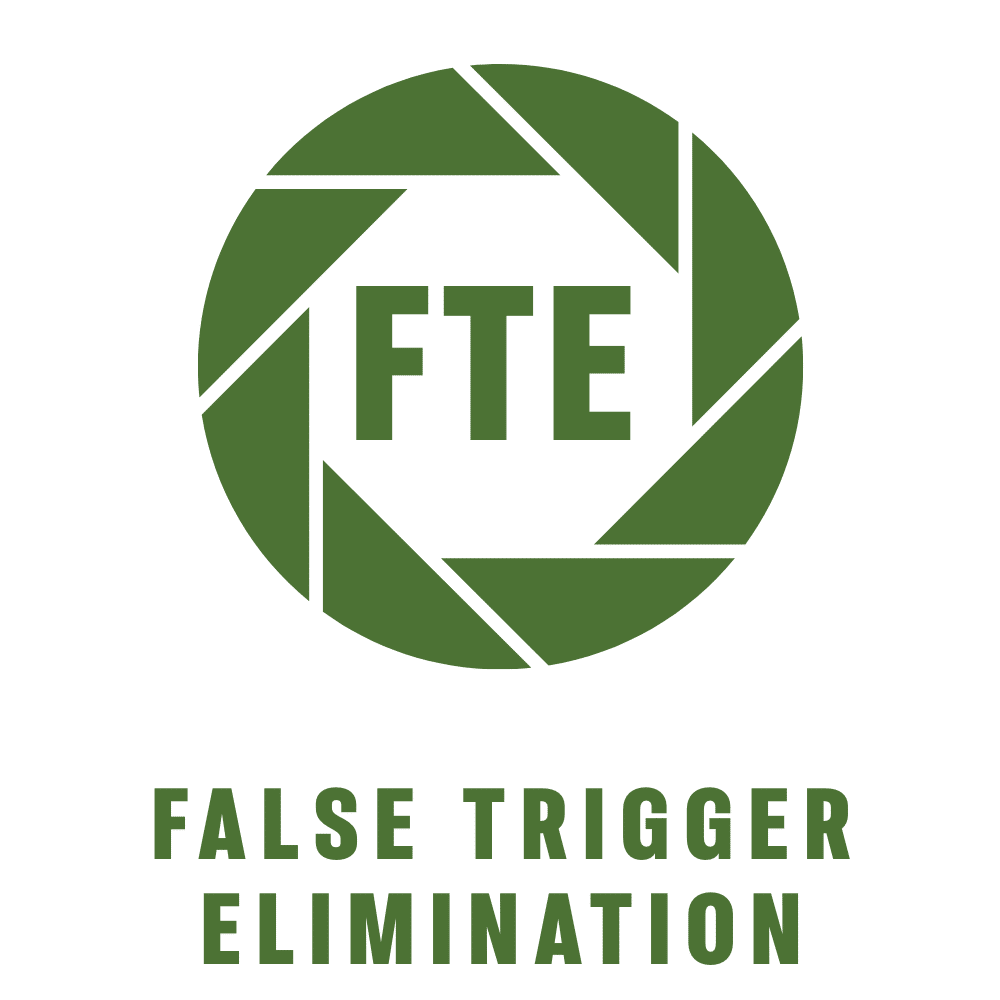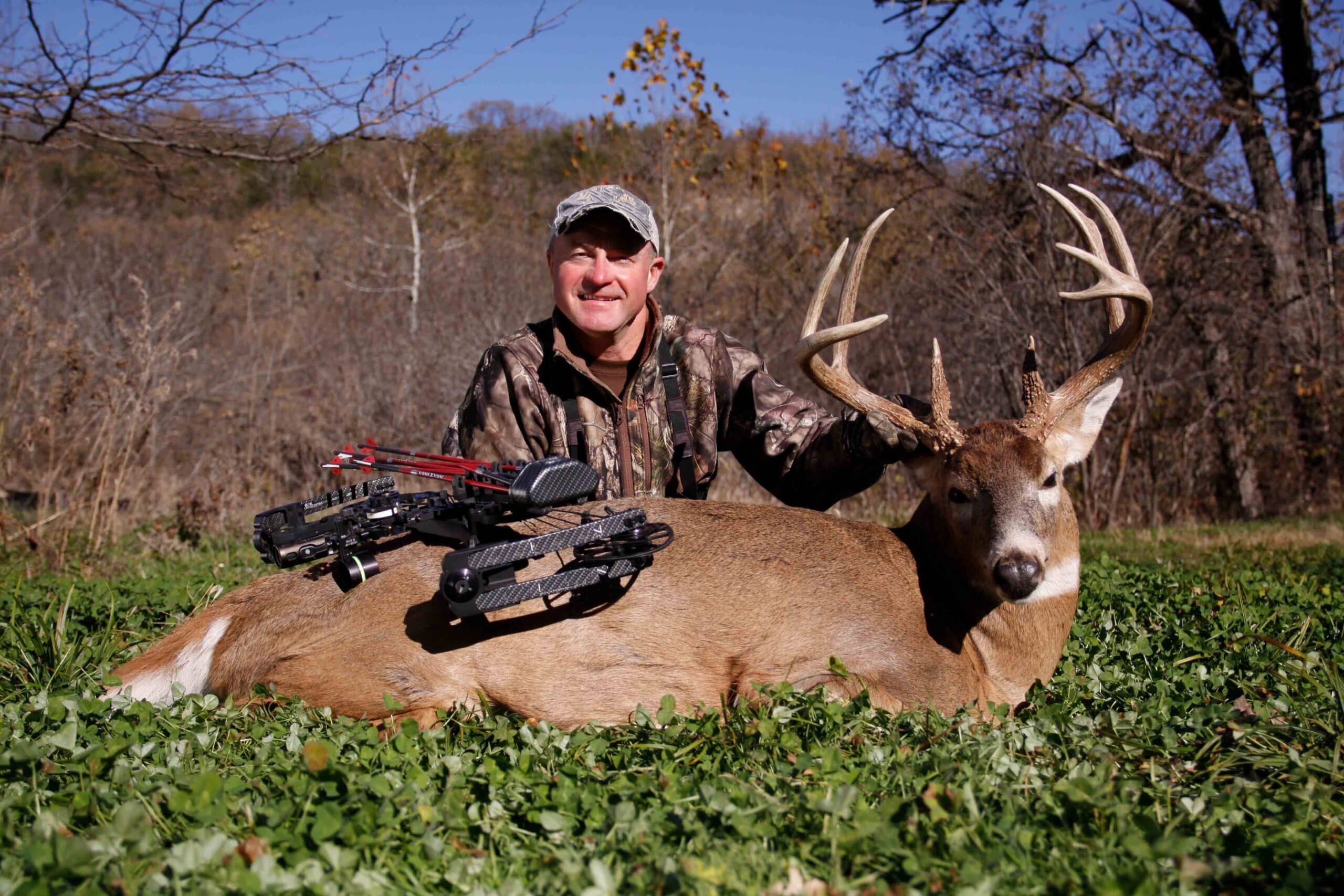The Buck Stops Here
The whitetail rut musters up visions of bucks trotting around in the daylight chasing does. They traipse around their territory, disperse to new territories and although they still move more at dawn and dusk, they show no aversion to moving in the daylight now. What is not to love?
Regrettably, all that movement might be the one factor you never thought would sink your shot at a rutting buck. Bucks may cautiously stroll about, visiting scrapes and rubbing on trees, but when the true rut explodes with estrus permeating the air, bucks spend much of their time in perpetual motion.
That movement adds up to more buck sightings, but you may just get a glimpse and no shot whatsoever. To tip the odds in your favor of having time to aim at a mover and shaker, consider strategizing to bring a buck to a screeching halt. These tactics could make a buck hit the brakes without the tendency to jump the string for those of you bowhunting.
Use Deer Scent
Whitetail scents provide a reliable stopping element in nearly every setting. My archery success hinges highly on having bucks stop in a shooting lane while they investigate scents I placed there. While bowhunting in the openness of the Great Plains or in the constrictions of a forested, Midwest woodlot, scents have performed for me. It forces bucks to stop for an inspection and distracts them while I draw back my bow or aim my firearm.
You can dispense scents into a real or mock scrape. For even faster deployment, dip a wick in scent and place it upwind of a shooting lane.

My favorite method of immediate dispersion is via a spray bottle with doe estrous scent. When I come across a great ambush location or need to hunt an area with no mock scrape, I quickly mist vegetation along a trail in a shooting lane. You need to aim for an area that is nose level to a deer and not overdo it. Too much scent can create confusion leading to panic. A few blasts are all you need to make a deer stop for a nonthreatening investigation.
In every situation, you must control your own scent, especially while walking into shooting lanes to mist, or hang wicks. Wear rubber-bottomed boots, use scent elimination products and avoid touching nearby vegetation to ensure curiosity traps are not contaminated.
Use Calls
When you want to stop someone or even nudge them your way, you talk to them. Put the same premise to work on whitetails. Use your deer calls to bring them to a halt as they look for the conversationalist in the woods.
The easiest of the stopping calls to master is the grunt. Use it sparingly and test the waters with a soft grunt first. Do not turn the volume up to a heavy metal level. You want the soft grunt to make a buck question if it even heard it, thus prompting the pause. Remember, a buck’s footsteps in crunching leaves or the rustling of limbs could overpower your call and that is when a follow-up grunt at a higher level may be required. Follow a similar test pattern with the bleat call.
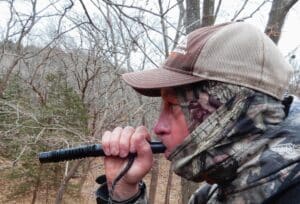
Be ready for the buck to stop and shoot immediately after acquiring the target. While hunting with a firearm I will use my grunt call, but while bowhunting with a buck within arrow range, I use my mouth so I can be ready to shoot and not have to let go of a call and then aim.
Although I do not like to use shock and awe for stopping bucks while bowhunting, I have no problem going all in with a firearm in my hands. In cases where I have a fast-moving buck crossing a shooting lane, I settle for the shot and then bark or howl like a coyote. I have yet to see a buck bolt from that, especially when it is 100 yards away or farther. They always stop to assess the location of danger and by then my Hornady bullet has left the launch pad.
Use A Decoy
Third on my list of showstoppers is the use of a decoy. I prefer to use a buck decoy in the pre-rut and a doe as the rut wanes. In the pre-rut bucks square off to maintain the pecking order, but once breeding explodes, bucks turn their attention to every doe in the woods for estrus opportunities.
Decoy magic includes not only stopping a buck, but distracting it. When placed away from your hide, it turns a buck’s attention opposite of you. This allows you to draw a bow or even pick up your muzzleloader as a buck’s attention is clearly focused away at the artificial friend. You may encounter an over eager buck that immediately turns to engage the opponent. Fortunately, most bucks pause to appraise their brethren, like a boxer in the ring. This gives you vital seconds to take a standing shot.
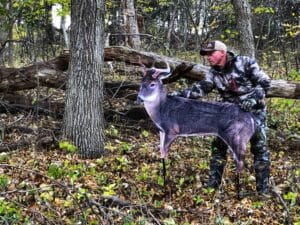
Decoys come in all varieties, but Montana Decoy 2D photo decoys offer a lightweight, collapsible decoy that takes seconds to set out. Plastic decoys also do the trick, but become hindersome to transport into dense woods. Plus, although you should do some serious thinking before using a decoy during a firearm season, Montana Decoys fold up to stow out of sight in your backpack for safety in any season. Use in firearm season at your own discretion.
Whitetail bucks keep a busy schedule during the rut. They need to since it is the only time of year they can breed. Slowing them down for a shot is your job and doable with a few simple tricks.
About the Author: Mark Kayser is a prolific outdoor writer and hunting television host. Mark spends his falls chasing elk and whitetails from the Rocky Mountains to the Midwest. From solo DIY elk hunts on public land to sitting in a treestand waiting to ambush rutting whitetail bucks, Mark lives and breathes the hunting lifestyle. For more about Mark Kayser and ways to follow him on social media, visit www.markkayser.com.
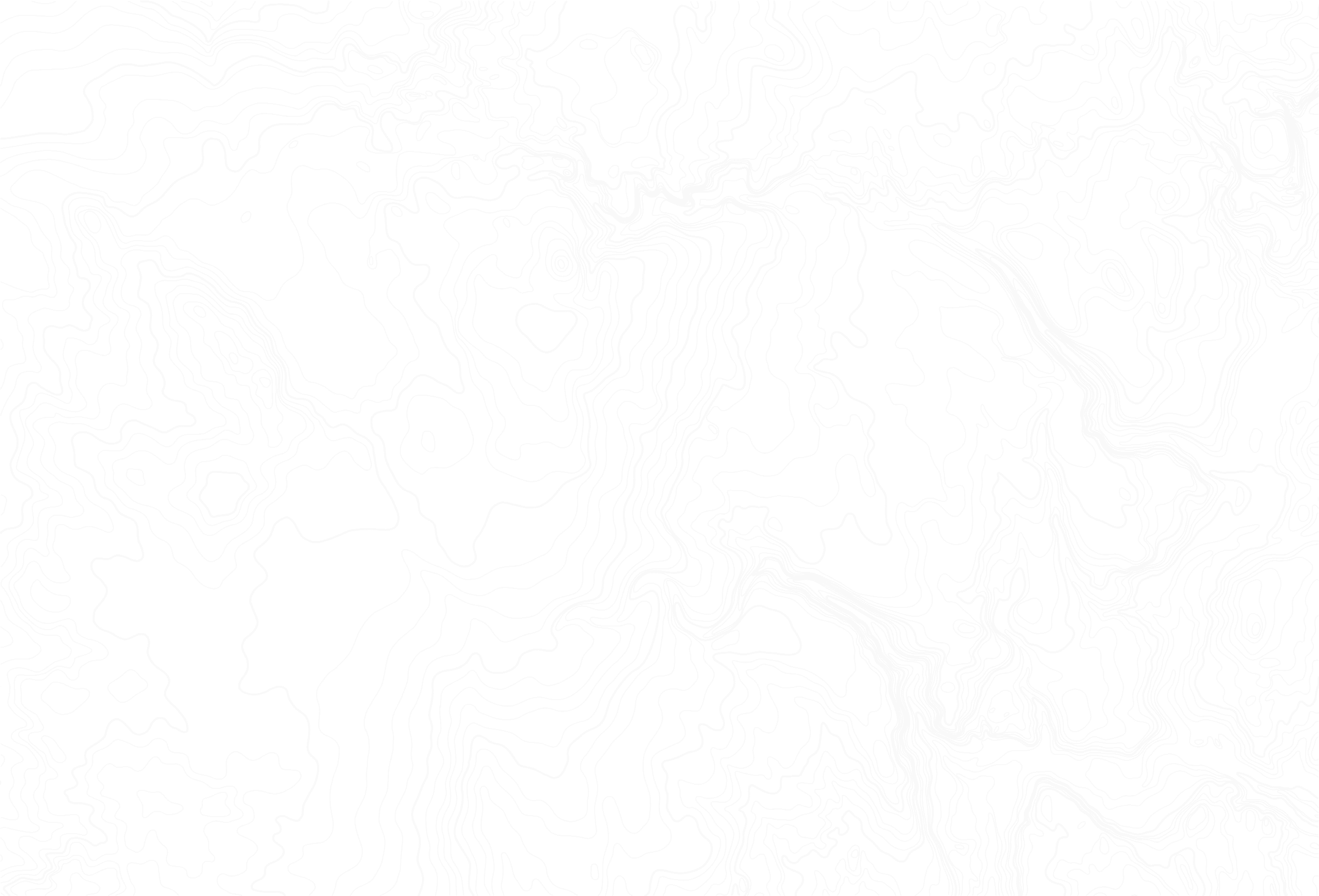

Featured
Juicy homemade jalapeno cheddar brats are perfect for grilling all summer long. They’re packed with all the right seasonings and fresh ingredients, making them extra tasty.

Featured
MeatEater and Moultrie Mobile join teams to bring hunters closer to nature.

Featured
These wild turkey skewers are tender and smothered in a homemade teriyaki glaze. Wild turkey sometimes gets a bad reputation for being a tough meat but when prepared properly using the steps in this recipe, the results are amazing.

